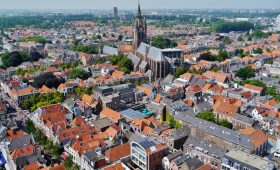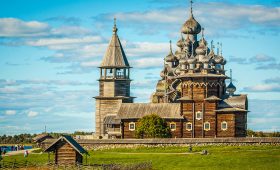Exploring Gamla Nature Reserve
Gamla Nature Reserve, located in the Golan Heights of Israel, offers a unique blend of natural beauty and historical significance. This expansive area covers over 5,000 acres and is a testament to Israel’s dedication to preserving its natural and cultural heritage. The name “Gamla” is derived from the Hebrew word for “camel,” a nod to the hill’s distinctive shape.
What Makes Gamla Unique
Wildlife and Natural Attractions
The reserve is home to Israel’s largest nesting colony of Griffon vultures, alongside a variety of other birds of prey. Visitors might also spot nimble ibexes navigating the rocky terrain. The Gamla and Daliot streams run through the reserve, featuring Israel’s highest waterfall at 51 meters, which, while impressive, dries up during the summer and autumn months.
Historical and Archaeological Significance
Gamla is not just about natural beauty; it also holds deep historical roots. The ancient city of Gamla was a Jewish stronghold during the Great Revolt against the Romans. Visitors can explore the remnants of city walls and a synagogue. Additionally, the reserve includes a Bronze Age dolmen field with 716 dolmens and the ruins of a Byzantine-period village, known as Deir Qeruh, which features a well-preserved monastery.
Scenic Landscapes and Hiking Trails
The landscapes here are nothing short of breathtaking, with rugged cliffs, deep canyons, and lush greenery. The reserve offers a network of hiking trails suitable for all levels, from novice walkers to seasoned hikers. These trails provide an excellent opportunity to immerse oneself in the natural beauty and historical context of the area.
Best Times to Visit
For the best experience, plan your visit during spring (March to May) or fall (September to November). Spring brings mild weather and vibrant wildflowers, while fall offers a palette of warm hues as the seasons change. Be aware that the waterfall may not be flowing during the drier months.
Getting There
By Car
Driving is a convenient option for reaching Gamla Nature Reserve. The reserve is accessible via well-maintained roads from major cities like Jerusalem or Tel Aviv.
By Public Transportation
Public transportation is also available, with regular bus services connecting the reserve to various cities in Israel. This option allows you to enjoy the scenic views without the hassle of driving.
Exploring the Reserve
Guided Tours
Consider joining a guided tour to gain deeper insights into the reserve’s natural and historical features. Knowledgeable guides can enhance your understanding and appreciation of the area.
Hiking and Biking
For those who prefer a more active exploration, hiking and biking are excellent ways to experience the reserve. Whether you rent a bicycle or set out on foot, the trails offer a rewarding adventure.
Key Takeaways
- Home to Israel’s largest Griffon vulture colony and diverse wildlife.
- Rich historical sites, including ancient city ruins and a Byzantine village.
- Stunning landscapes with cliffs, canyons, and a seasonal waterfall.
- Varied hiking trails for all experience levels.
- Best visited in spring or fall for optimal weather and scenery.
- Accessible by car or public transportation, with local exploration options.




